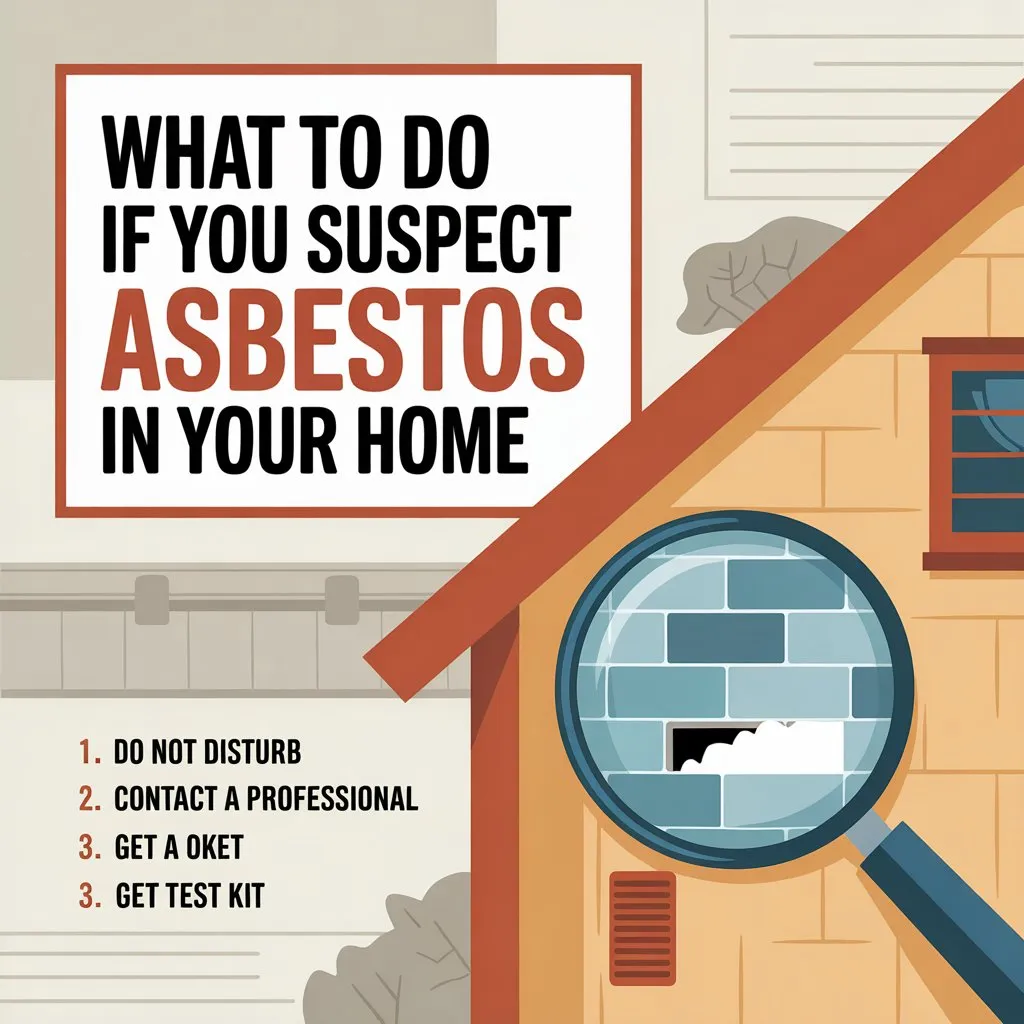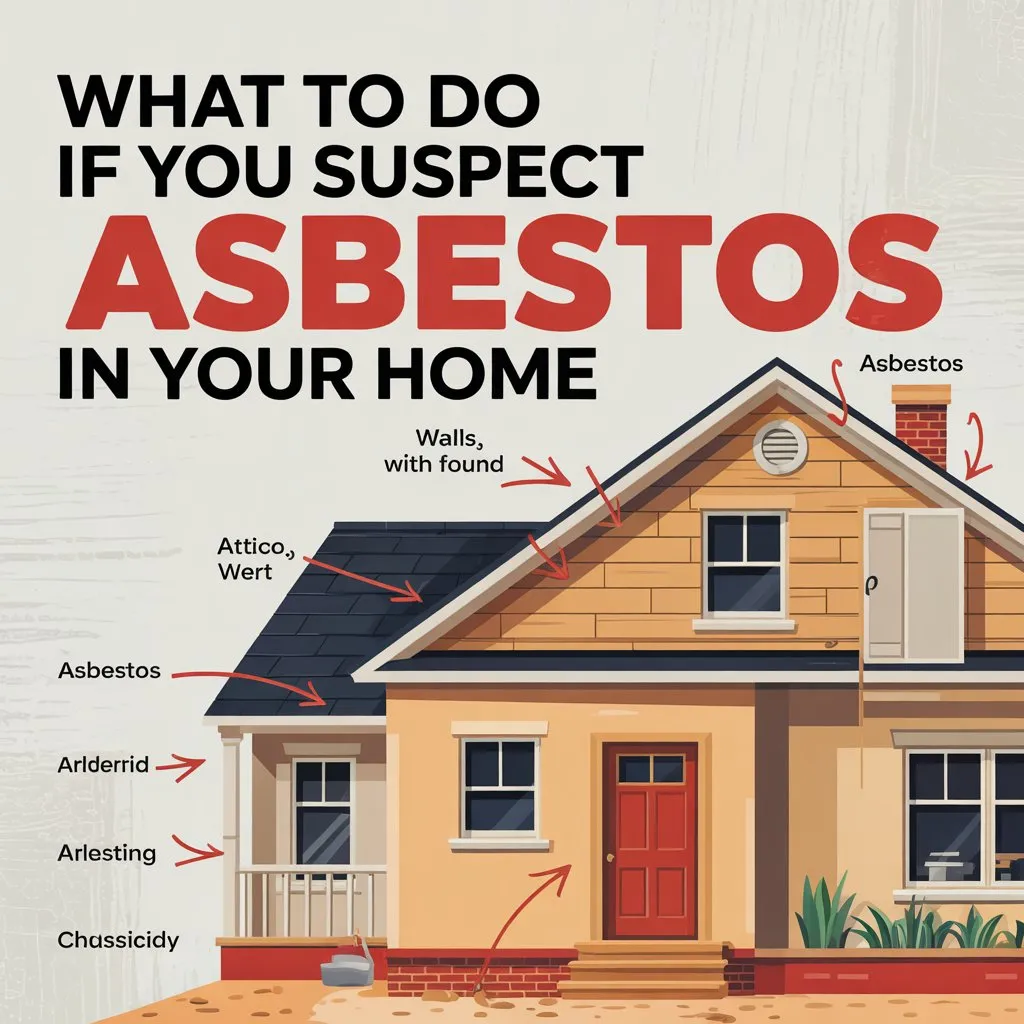If you suspect asbestos in your home, do not disturb the material. Contact a licensed asbestos professional to inspect it. Asbestos becomes dangerous when its fibers are released into the air and inhaled. These fibers can cause serious health issues over time. Early detection and safe management reduce the risk of exposure. As a certified asbestos contractor, we provide safe, legal, and cost-effective solutions to identify and address asbestos hazards in residential properties.
What Is Asbestos?
Asbestos is a group of six natural minerals made of thin, needle-like fibers. These fibers are resistant to heat, fire, electricity, and corrosion. Because of these properties, asbestos was widely used in building materials and insulation until the late 20th century.
Most homes built before 1990 likely contain asbestos in some form. Its use is now restricted or banned in many countries, but asbestos-containing materials (ACMs) remain in older buildings.
Common Asbestos-Containing Materials
Asbestos was mixed into many common construction products. These may still exist in:
- Thermal insulation on pipes, boilers, and ducts
- Vinyl floor tiles and adhesives
- Ceiling tiles, especially acoustic and drop-ceiling types
- Cement sheeting in walls, garages, and sheds
- Roofing materials, including shingles and felt
- Textured paints and spray-on coatings (e.g., popcorn ceilings)
- Wallboard and joint compound
- Fireproof fabrics and linings
Even if materials look safe, disturbing them without proper controls can release harmful fibers.
Why Asbestos Is Dangerous
Asbestos poses a health risk when disturbed. If materials containing asbestos are broken, cut, or damaged, microscopic fibers are released into the air. Once inhaled, these fibers can remain in the lungs permanently.
Health Risks
Asbestos exposure does not cause immediate symptoms. Diseases develop over time, often taking 20–40 years to appear.
- Asbestosis: Scarring of lung tissue, causing shortness of breath and reduced lung function
- Mesothelioma: A rare, aggressive cancer affecting the lining of the lungs or abdomen
- Lung cancer: Risk increases with asbestos exposure, especially in smokers
- Pleural thickening and effusion: Fluid buildup or thickening of the lining around the lungs
These conditions are often fatal. Even low levels of exposure can lead to disease.
Signs You Might Have Asbestos
You cannot see or smell asbestos. Materials may appear normal even when they contain asbestos. However, these signs may suggest its presence:
- Your home was built or renovated before 1990
- There is old insulation around pipes or ducts
- You see crumbling, cracked, or damaged ceiling or wall panels
- Flooring has a fibrous appearance or strange pattern underneath the surface
- A home inspection mentions “fiber cement,” “insulating board,” or “vermiculite”
- Ceiling texture looks like “popcorn” or spray-on finish from mid-century construction
What to Do Immediately

1. Do Not Touch the Material
Do not cut, drill, sand, or scrape any material you suspect might contain asbestos. Even a small disturbance can release hazardous fibers.
2. Seal Off the Area
Keep people and pets away from the space. Close doors, cover vents, and turn off HVAC systems if connected to the area.
3. Contact a Licensed Asbestos Contractor
Reach out to a certified asbestos professional. We are licensed to inspect, test, contain, and remove asbestos according to safety and legal standards.
Professional Asbestos Inspection and Testing
We begin with a visual inspection, followed by safe sample collection if needed. Samples are tested by certified laboratories to confirm whether asbestos is present.
You’ll receive a full report outlining:
- Locations tested
- Results of the laboratory analysis
- Risk assessment based on material condition
- Next-step recommendations (repair, encapsulation, removal)
What Happens Next: Safe Asbestos Solutions
We offer three professional options based on your situation.
1. Encapsulation
We apply a special sealant to asbestos-containing materials (ACMs) to prevent fiber release. This method works well for stable materials in good condition.
2. Enclosure
We build airtight barriers to isolate asbestos material from the surrounding space. Enclosure contains the hazard without removing the material.
3. Removal
If materials are damaged, in high-traffic areas, or obstructing planned renovations, we recommend full Asbestos removal. Our trained team removes asbestos safely, minimizes dust, and handles proper disposal at licensed facilities.
We’ll guide you through every step, including required permits, local notifications, and air monitoring.
Why Hire a Licensed Asbestos Contractor?
Hiring a professional is not just about compliance — it’s about protecting health and preventing long-term liability.
With us, you get:
- Certified expertise – We are trained and licensed to handle asbestos safely
- Proper equipment – We use sealed work areas, protective suits, and negative air pressure systems
- Full legal compliance – We follow all local, state, and federal regulations
- Safe disposal – Waste is transported and disposed of at licensed hazardous waste facilities
- Air clearance testing – We verify safety before reoccupying the area
DIY removal is illegal in many regions and dangerous in all situations. Trust trained professionals for safe, legal asbestos work.
What to Expect During Removal

Our removal process includes:
- Site Preparation: Seal off the area, post warning signs, shut down air systems
- Controlled Removal: Wet materials, use sealed containers, follow strict fiber containment
- HEPA Cleaning: Use HEPA vacuums and wipes to clean surfaces
- Air Quality Monitoring: We conduct final clearance testing
- Disposal: Transport to certified disposal sites with full documentation
We issue you a clearance certificate and keep all records for future property sales or insurance purposes.
Asbestos Removal Costs
Asbestos Costs depend on the material type, quantity, accessibility, and urgency.
| Service Type | Estimated Cost (USD) |
|---|---|
| Inspection & Testing | $250 – $800 |
| Encapsulation | $2 – $6 per square foot |
| Enclosure | $10 – $20 per square foot |
| Full Removal | $15 – $45 per square foot |
| Final Air Testing | $200 – $500 |
We provide transparent quotes, no hidden fees, and tailored service based on your property’s specific needs.
Legal and Safety Compliance
Asbestos handling is heavily regulated. We handle:
- Required notifications to local health or environmental agencies
- Site safety planning and containment
- Permit applications, where applicable
- Certified transport and disposal of asbestos waste
- Final documentation and air clearance certificates
Our services meet OSHA, EPA, and local environmental health standards.
Protect Your Property and Your Health
Why Timely Action Matters
- Delaying inspection or removal increases health risk
- Damaged ACMs can contaminate indoor air quickly
- DIY renovations can unknowingly disturb hidden asbestos
- Real estate transactions may stall if asbestos issues are unresolved
We help homeowners, property managers, and real estate professionals handle asbestos risks before they become expensive problems.
Book a Professional Asbestos Assessment
If you’re planning renovations, noticed suspicious materials, or just want peace of mind, schedule an inspection today. Our licensed team handles residential, commercial, and industrial sites.
Call us now or request a callback using our online form.
We respond quickly, work safely, and deliver certified solutions that protect your health and property.
Final Thoughts
If you suspect asbestos in your home, take the risk seriously. Do not handle the material yourself. Contact a licensed asbestos inspector to confirm its presence and condition. Follow professional advice for removal or containment. Safe management now can prevent life-threatening diseases later.
Contact Us For more
Email: [email protected]
Phone Number: +937 252-4724
Address: 2617 S Smithville Rd, Dayton, Oh, United States

Dr. Chris Cameron is a leading asbestos expert with over two decades of experience in occupational and environmental health. He holds a Ph.D. in Environmental Science and has worked extensively with government agencies, private sector organizations, and health and safety regulators to assess, manage, and mitigate asbestos-related risks. Dr. Cameron is widely recognized for his research on asbestos exposure, remediation strategies, and public health policy